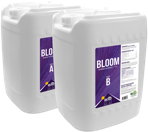Pesticide application guide
Pest management in Cannabis cultivation is crucial to optimizing yield and quality. The selection of the right pesticide and dose for the target pest are important decisions made by growers. Making the right decisions in how the pesticide is applied is equally important in optimizing pest control. The following paper outlines important considerations for optimizing pesticide applications in Cannabis. These considerations include pesticide mixing, equipment selection, equipment calibration, and environmental impacts.
PESTICIDE MIXING
Proper mixing of pesticides, especially when applying two or more products together, can ensure a successful application. When pesticides are improperly mixed, spray equipment may be damaged and pest control may be unsuccessful. Here are a few general guidelines to follow when mixing pesticides.
- Always add water to the tank first, followed by the pesticide or other additives.
- Ensure thorough agitation before applying. When combining two or more pesticides in the tank, completely mix the first pesticide with water before adding the second.
- Apply mixture immediately after preparation for maximum effectiveness.
- Water quality can negatively impact pesticides. Always use water with pH of 6-7. Do not adjust the pH of a mixed pesticide spray solution.
One way to ensure pesticide mixing success is to perform a jar test before mixing products for an application. A jar test is a small-scale test to determine the compatibility of two or more products being applied together. Performing the test before application can prevent adverse chemical reactions from ruining spray equipment. Below is a step-by-step guide to performing a jar test.
MATERIALS
- Jar
- Graduated cylinder for measuring
- Pesticide(s)
- Water
- Gloves
- Safety goggles
STEPS
- Determine appropriate carrier volume of water and pesticide rates for the application.
- Scale down the amount of carrier volume to fit in the jar
- Example: if using a 16 ounce jar, 12 ounces of water will fit and allow enough room for good agitation of water and pesticide
- Calculate the appropriate amount of pesticides that will fit in water added to the jar
- Example: Let’s say that you will spray one of the pesticides at 2 ounces per gallon (128 ounces) of water. The jar will fit 12 ounces of water for the jar test. To determine the amount of pesticide, use the calculations below.
2 ounces pesticide/128 ounces of water = 0.01612 ounces of water x 0.016 = 0.1875 ounces pesticide - Repeat calculation for the second pesticide
- Example: Let’s say that you will spray one of the pesticides at 2 ounces per gallon (128 ounces) of water. The jar will fit 12 ounces of water for the jar test. To determine the amount of pesticide, use the calculations below.
- Wearing gloves and safety goggles, add appropriate amount of room temperature water to the jar.
- Add amount of first pesticide to the jar from step 3.
- Screw lid on jar, ensuring a tight seal.
- Agitate jar to thoroughly mix first pesticide.
- Remove lid and add second pesticide.
- Replace lid and thoroughly mix.
- Allow jar to rest for several hours undisturbed to see if an adverse reaction occurs.
WHAT ARE ADJUVANTS?
In many pesticide applications, adjuvants are recommended to improve pesticide performance. Adjuvants can be an oil, surfactant, or water conditioner added to the spray tank. Follow pesticide label recommendations when considering the use of an adjuvant. In general, adjuvants provide one of the following benefits:
- Drift control (outdoor applications)
- Improve deposition on leaf surface
- Increase spreading on leaf surface
- Reduce foaming
- Alter pH
- Improve water characteristics to assist ingredient activity
SPRAY EQUIPMENT
In indoor and greenhouse Cannabis cultivation, many different types of spray application equipment are available. While backpack sprayers are very common in the Cannabis industry, other types of application equipment are available for pest management. Each equipment type is ideal for different types of pests and cultivation operations.
HOW TO SELECT SPRAYING EQUIPMENT
The key to selecting spray equipment is to match the equipment to the target pest and growing area. There are many types of spraying equipment, but can be classified by the volume of water used to cover a specific area. Additionally, each type of equipment produces different types of spray suited to specific pests. In general, there are three main types of spray equipment: ultra-low volume, low-volume, and high volume sprayers.
- Ultra-low volume sprayers can achieve a fog-like spray. Typically, these sprayers can cover 10,000 square feet with less than 1 gallon of water or carrier.
- Example – thermal pulse jet-fogger
- Target pests – flying insects such as whiteflies
- Low volume sprayers produce mist-like sprays and use 1-5 gallons of water or carrier per 10,000 square feet.
- Example – cold fogger
- Target pests – foliar insects such as aphids, mites, and fungi
- High volume sprayers produce larger droplets and use 25-50 gallons of water or carrier per 10,000 square feet.
- Examples – backpack or hand-pump sprayer
- Universal option for pest control
Each type of equipment comes with its own benefits and drawbacks. Consult manufacturers for more information on greenhouse and indoor spraying equipment.
HOW TO CALIBRATE EQUIPMENT
Spraying equipment requires regular calibration to ensure that the right amount of pesticide is hitting the target. Without calibration, products may be under applied, resulting in inadequate pest control. Conversely, products may be over applied, resulting in wasted material or damage to plants. Sprayer calibration allows the applicator to know how much pesticide solution flows through the nozzle in a given time. This information allows the applicator to understand how long it will take to spray a room with a given tank size. Below is a step-by-step guide to calibrating spray equipment. First, gather the following materials to perform sprayer calibration.
MATERIALS
- Sprayer
- Water or approved carrier
- Timer
- Collective device
- Graduated cylinder
- Bucket
The next step is to determine how much water flows through the nozzle in a given time. This requires filling the spray tank and measuring the amount that flows through the nozzle in a given time.
| HIGH VOLUMESPRAYER CALIBRATION | LOW/ULTRA LOW VOLUMESPRAYER CALIBRATION |
|---|---|
|
|
Calculate how long it should take to apply product in desired area based on manufacturer recommended spray volumes.
Example: Applicator is using a cold fogger (low volume) to apply a pesticide. The manufacturer recommends using 2.63 gallons to cover 10,000 square feet. Calibration test gives a flow rate of 0.26 gallons in 1 minute. Calculation of time to cover 10,000 square feet:
0.26 gallons per minute / 2.63 gallons x 10,000 sq. ft. = 10 minutes
Based on calibration, it will take 10 minutes to cover 10,000 square feet.
OTHER PESTICIDE APPLICATION CONSIDERATIONS
Application of pesticides is important for pest control and optimizing plant yield and quality. Many factors can affect pesticide applications and their effectiveness. When applying pesticides, consider the following environmental and plant factors:
- Plant health
- Plant growth stage
- Temperature
- Humidity
- Lights
- Air circulation
When any of the above factors are less than ideal, pest control will be affected. For example, applying an oil-based pesticide at a high rate or with too little water on sick or diseased plants may result in additional plant damage. Always follow label recommendations or consult equipment suppliers when mixing, applying, storing and disposing of pesticides.

